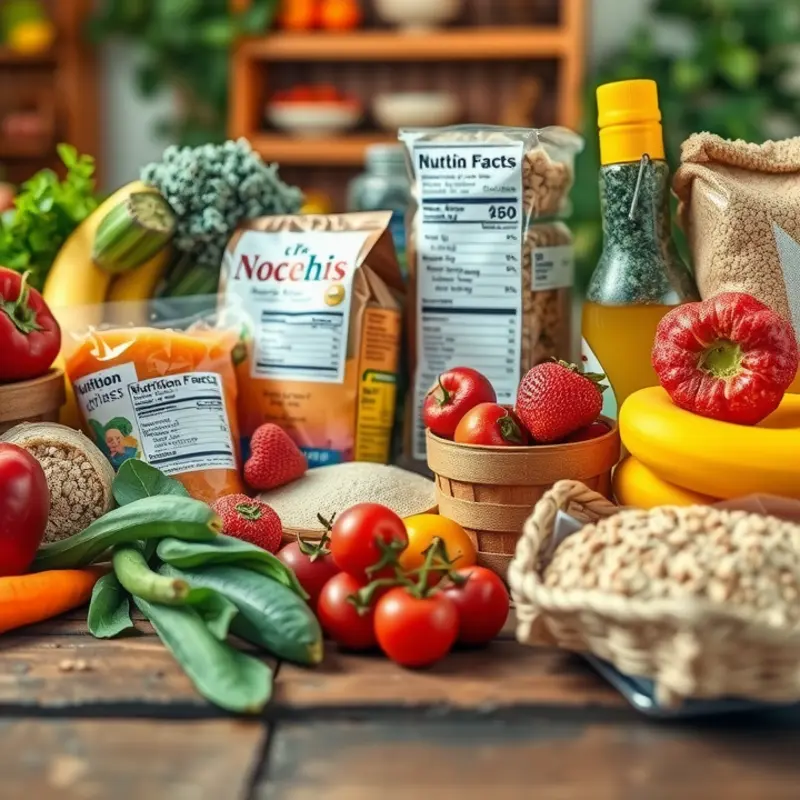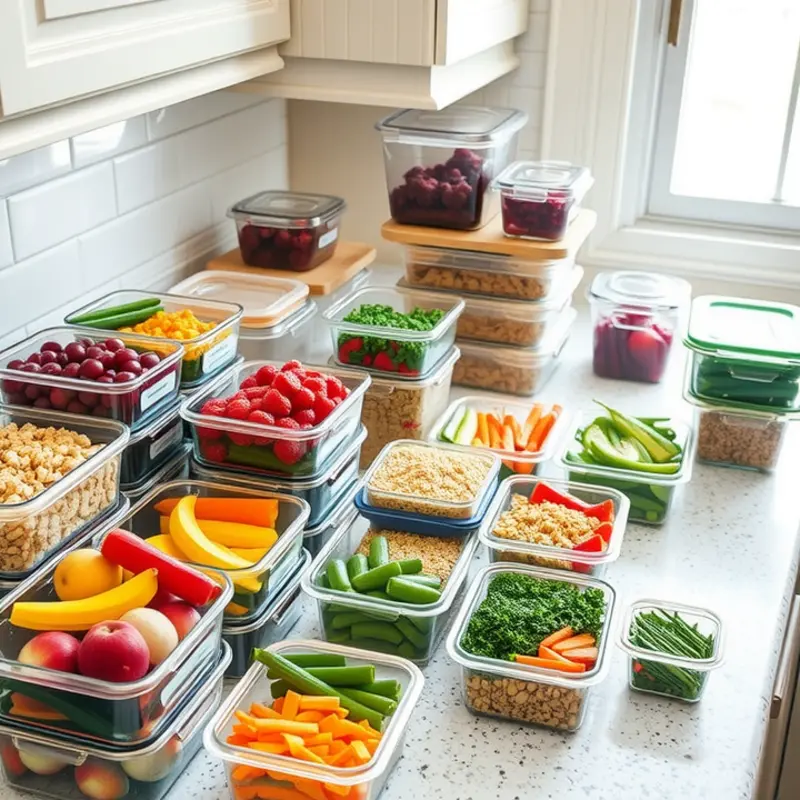Every bite we take shapes our health and well-being. Making mindful food choices empowers us to feel our best and supports a healthier lifestyle. The journey towards nutritious eating doesn’t have to be overwhelming; instead, it can be an enjoyable experience filled with discovery. By incorporating small yet impactful changes into our daily routines, we can build a solid foundation of healthful eating habits that thrive for years to come.
Understanding Food Labels: Your Guide to Nutritional Value

Deciphering food labels can feel overwhelming, but it is a crucial skill for making informed dietary choices. By understanding the components of food labels, you can better align your selections with health goals.
Nutrition Facts Panel
The nutrition facts panel provides a snapshot of a product’s nutritional profile. It typically lists the amount of calories, macronutrients, vitamins, and minerals per serving. Start by examining the serving size, as it lays the foundation for understanding the rest of the information. Products often contain multiple servings, so it’s vital to adjust the numbers according to how much you’ll actually consume.
Calories and Macronutrients
Calories give you an idea of how much energy you’ll get from a serving. This can guide portion control, especially if you aim to manage weight. Pay attention to macronutrients like fat, protein, and carbohydrates. Look for higher levels of fiber and protein, which can aid in satiety and balanced nutrition. Be mindful of saturated and trans fat values, as reducing these can support heart health.
Vitamins and Minerals
The percentage daily values (%DV) show how much a serving contributes to your daily nutrient intake based on a 2,000-calorie diet. While individual needs may vary, aiming for a higher %DV in vitamins and minerals can enhance nutritional adequacy. Calcium, iron, and vitamin D are nutrients often lacking in diets; prioritizing foods rich in these can prevent deficiencies.
Ingredients List
Ingredients are listed by weight in descending order. The first few items are generally the primary components of the product. Look for whole foods and fewer additives, which often indicate minimal processing. Be cautious of lengthy lists with unrecognizable ingredients, which may signal highly processed foods. Learning about ingredients can also aid substitutions. For example, exploring non-dairy probiotics can expand options for those avoiding dairy.
Sugar and Sodium
Added sugars and sodium levels are crucial to monitor; excessive intake can lead to health issues. The American Heart Association advises limiting added sugars to 25 grams per day for women and 36 grams for men. Consider choosing products with natural sources of sweetness. Regarding sodium, aim for no more than 2,300 milligrams daily, as per dietary guidelines, to reduce risk of hypertension.
Using Food Labels Effectively
To use food labels to their fullest potential, compare similar products and choose those with better nutrient profiles. If you’re on a specialized diet, such as gluten-free or vegan, labels can help confirm the absence of restricted ingredients. Remember, learning to interpret these labels takes practice, but they are powerful tools in building nutritious, balanced meals without the stress of unforeseen unhealthy choices. By mastering food labels, you empower yourself to make informed, health-conscious decisions every day.
Meal Prep 101: Healthy Eating Made Easy

Meal preparation, or meal prep, streamlines healthy eating, making it straightforward to keep nutritious options at your fingertips. By dedicating a few hours a week to planning and preparing meals, you can save time, money, and reduce stress. Here, we will explore useful strategies to master meal prep.
Batch Cooking Basics
Batch cooking is fundamental to successful meal prep. Start by selecting a few favorite recipes that yield multiple servings. Cook these in large quantities and portion them out for the week. Recipes like soups, stews, and casseroles work exceptionally well for this. They often taste better after flavors meld in the fridge, offering satisfying meals throughout the week.
Another tactic is to prepare ingredients separately. Cooking grains, proteins, and vegetables independently allows you to mix and match components for varied meals. Roast a variety of vegetables, grill or bake proteins like chicken or tofu, and cook a big batch of rice or quinoa. With these staples, you can build multiple meals, altering flavors with different sauces or seasonings.
Versatile Recipe Ideas
When developing your meal prep plan, choose recipes that are adaptable. Stir-fries, for example, are incredibly flexible. You can use a wide range of seasoning styles and mix various vegetables and proteins. Salads are likewise versatile; incorporating different dressings keeps them interesting.
Consider adopting a theme for each meal prep session to keep it engaging. This week could be centered around Mediterranean flavors, while next week, you might explore Asian-inspired dishes. Variety helps sustain meal prep as a long-term habit.
Organizational Techniques
Organization is key in meal prep. Start by preparing a detailed shopping list based on the meals you intend to make. Keep an inventory of pantry essentials to avoid duplicate purchases. Designate a day to prep your meals; many people find weekends effective.
Utilizing clear storage containers can help you quickly identify meals. Label each container with the meal and date. This not only keeps your fridge orderly but also reduces food waste by ensuring older meals are consumed first. Consider the benefits of eco-friendly storage solutions to minimize single-use plastics in your kitchen. For more on sustainable kitchen storage, visit eco-smart kitchen storage.
Optimizing your kitchen space enhances your meal prep experience. Designate specific areas in your fridge and pantry for prepped meals or ingredients. This setup minimizes the time you spend searching, making cooking more enjoyable.
Consistency is Crucial
Consistency in meal prep is key to making it a seamless part of your lifestyle. Begin with realistic goals; trying to prep every meal for the week might be overwhelming initially. Focus on a single meal type, such as lunches, and expand as you grow comfortable with the process.
By integrating meal prep into your routine, you ensure healthy, home-cooked meals are always within reach. Through practice and perseverance, meal prep transforms from task to habit, supporting your health journey with ease and efficiency.
Final words
Improving your daily food choices is a journey, not a destination. By starting with simple practices like understanding food labels and engaging in meal prep, you can lay the groundwork for healthier eating habits. Embrace the process, explore new foods, and remember that every small decision counts towards your overall well-being. Equip yourself with knowledge and tools, and slowly but surely, you will see the positive effects of your efforts on your health.







